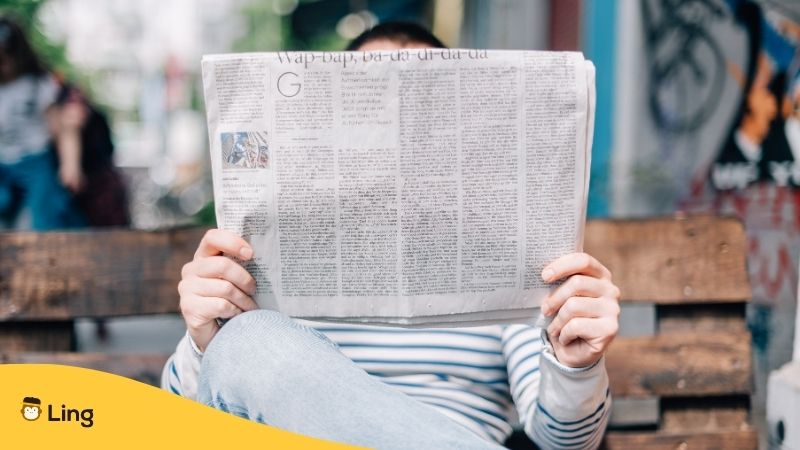The Serbian media landscape has undergone significant changes over the years, reflecting the country’s complex political and social dynamics. From the time of state-controlled media during the Yugoslav era to the current challenges of media freedom and digital transformation, the Serbian media sector has played a crucial role in shaping public opinion and democracy in the country.
This time, let’s explore the context, challenges, and transformation of Serbian media, highlighting both the achievements and the obstacles faced by journalists and media outlets. In 2020, the Press Freedom Report index ranked Serbia 93rd out of 180 countries, so there is quite a lot of work still to be done in this area. Let’s get started!
Historical Context Of The Serbian Media
In the era of Yugoslavia, the Serbian media was tightly controlled by the state, basically serving as a tool for propaganda and keeping the ruling regime in power. When Yugoslavia fell apart, and the conflicts of the 1990s erupted, media outlets became divided along political and ethnic lines, making the societal divide even worse.
After Slobodan Milosevic’s regime was overthrown in 2000, Serbia aimed for democracy and media freedom. But it wasn’t an easy ride. Although independent media outlets sprouted up initially, they soon faced political pressures, economic influences, and corruption that posed serious threats to their freedom. The concentration of media ownership and lack of transparency in financing raised concerns about fairness and unbiased reporting.
On top of that, Serbian journalists have had to endure physical attacks, threats, legal harassment, and all sorts of pressure. This created an atmosphere of fear and self-censorship, making it difficult for them to report objectively and hold the powerful accountable.

Serbian Media Vocabulary
Before we dive deeper into this topic, let’s first familiarize ourselves with the top terminologies in this topic that every learner should know.
| English | Serbian | Pronunciation |
| Television | Телевизија | Televizija |
| Cable | Кабл | Kabl |
| Public Television | Јавна телевизија | Javna televizija |
| Radio | Радио | Radio |
| Online | Онлине | Online |
| Принт | ||
| Billboard | Огласна табла | Oglasna tabla |
| Book | Боок | Book |
| Journal | Јоурнал | Journal |
| Magazine | Магазине | Magazine |
| Newspaper | Новине | Novine |
| Tabloid | Таблоид | Tabloid |
| Feature | одлика | Odlika |
| Article | Чланак | Članak |
| Editorial | Уредништво | Uredništvo |
| Column | Колона | Kolona |
| Breaking news | Свеже вести | Sveže vesti |
| News bulletin | Информативни билтен | Informativni bilten |
Challenges In Serbian Media
Political Interference
Despite transitioning to a democracy, political influence remains a significant challenge in Serbian media. Many media outlets and news agencies are perceived as aligned with specific political parties or interest groups, affecting the objectivity and diversity of information presented to members of the public.
Lack Of Pluralism And Transparency
The concentration of media ownership in the hands of a few individuals or corporations has limited media pluralism in Serbia. This lack of diversity poses a risk to the free flow of information and healthy democratic discourse. Additionally, issues related to media transparency, including undisclosed ownership, close links with authorities and the ruling party, and hidden agendas, further complicate the media landscape and hamper free media.
Journalistic Safety And Freedom
Ensuring the safety and freedom of Serbian journalists is crucial for any vibrant media system. Unfortunately, Serbia faces challenges in this regard, with instances of physical attacks, intimidation, and harassment targeting both male and female journalists critical of the government or powerful private interests. Such actions stifle press freedom and undermine the public’s right to access independent and reliable information.
Financial Sustainability
The economic viability of media outlets is another pressing issue. Many Serbian media organizations struggle with financial sustainability due to limited advertising revenue, low subscription rates, and a lack of diversified funding sources. These financial constraints can lead to compromised journalistic integrity and reduced capacity for investigative reporting.
Recent Progress And Initiatives
Independent Journalism Initiatives
Despite the challenges, there are notable initiatives that strive to promote independent quality journalism in Serbia. Independent investigative journalism platforms, online news portals, print media, TV stations, and fact-checking organizations have emerged, playing a vital role in providing alternative perspectives and promoting accountability.
Media Regulatory Reforms
Serbia has undertaken efforts to improve media regulation and market transparency. The adoption of the Law on Public Information and Media in 2014 aimed to enhance media freedom, professional standards, and transparency in ownership. However, the effective implementation and enforcement of these regulations remain ongoing challenges.

Digital Transformation
The advent of digital technology and electronic media has brought about both opportunities and challenges for Serbian media. Internet access and social media platforms have provided new avenues for information dissemination and citizen journalism. However, the rise of disinformation and fake news has complicated the media landscape, fueling polarization and undermining trust in traditional media sources.
Independent online media outlets have emerged as important players in providing alternative viewpoints and investigative journalism. They have helped to fill the gaps left by traditional media and have played a significant role in shaping public discourse. However, sustainability remains a challenge, as many of the owners of these outlets struggle with funding and face economic pressures.
Media Literacy And Citizen Engagement
Promoting media literacy and fostering citizen engagement are crucial steps toward a healthier media environment in Serbia. Education and awareness campaigns can help citizens develop critical thinking skills and navigate the complexities of modern media. By understanding the sources and motives behind news stories, individuals can become more discerning consumers of news and information. This is particularly important because it is estimated by the Media Register that Serbs watch an average of five hours of television per day – this is the highest figure in Europe.
Serbian media has come a long way since the era of state-controlled media, but it still faces significant challenges. Media freedom, transparency, and pluralism remain critical issues that need to be addressed to ensure a vibrant and democratic media landscape. With ongoing digital transformation and the rise of alternative media, it is crucial to support independent journalism and empower Serbian people to critically engage with the information they consume.
Learn More Serbian With Ling
Would you like to get a better grip on the scintillating Serbian language? Then, the Ling app is the answer, with language lessons, games, and quizzes tailored specifically for you to help you learn Serbian (and 60+ other languages) quickly and easily. So what are you waiting for? Download the Ling app from the Google Play and the App Store today to get started!































































